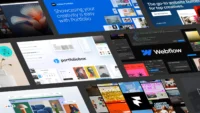In this article:
- 1. Define Your Vision and Goals
- 2. Streamline Your Operations
- 3. Build a Strong Brand Identity
- 4. Expand Your Client Base
- 5. Leverage Marketing and SEO
- 6. Invest in Professional Development
- 7. Build a Talented Team
- 8. Implement Financial Management Practices
- 9. Focus on Client Relationships
- 10. Scale Strategically
- Final Thoughts
Transitioning your design business from a side hustle to a full-blown empire is an exhilarating journey filled with both challenges and rewards. Whether you’re freelancing part-time or running a small design studio, the key to scaling up lies in strategic planning, smart decision-making, and continuous growth. Here’s a roadmap to help you elevate your design business to new heights.
1. Define Your Vision and Goals
Start by clarifying your long-term vision. Where do you see your design business in five years? Setting specific, measurable goals will help you chart a course for growth. Break these down into short-term objectives that will keep you on track.
- Vision Statement: Craft a compelling vision that resonates with your values and aspirations.
- SMART Goals: Define Specific, Measurable, Achievable, Relevant, and Time-bound goals to guide your growth efforts.
2. Streamline Your Operations
As your business grows, managing projects efficiently becomes crucial. Invest in tools and systems that can help you automate repetitive tasks, track progress, and collaborate seamlessly with clients and team members.
- Project Management Tools: Use platforms like Asana, Trello, or Monday.com to keep your projects organized.
- Design Software: Stay updated with the latest design tools that can enhance your productivity.
3. Build a Strong Brand Identity
A recognizable brand sets you apart from competitors and attracts ideal clients. Ensure your brand identity is cohesive across all touchpoints, from your website to your social media profiles.
- Logo and Visuals: Invest in a professional logo and visual assets that reflect your design style.
- Consistent Messaging: Maintain a consistent tone and messaging that aligns with your brand values.
4. Expand Your Client Base
To grow your design business, you need a steady stream of clients. Focus on expanding your network and showcasing your work to attract potential clients.
- Networking: Attend industry events, join design communities, and connect with potential clients on platforms like LinkedIn.
- Portfolio: Keep your portfolio updated with recent work that demonstrates your capabilities and style.
5. Leverage Marketing and SEO
Effective marketing strategies will help you reach a larger audience. Utilize both online and offline channels to promote your services and build brand awareness.
- Content Marketing: Start a blog or create content that provides value to your audience and showcases your expertise.
- Search Engine Optimization (SEO): Optimize your website for search engines to increase your visibility and attract organic traffic.
6. Invest in Professional Development
The design industry is constantly evolving, and staying ahead of trends is vital for growth. Invest in your skills and knowledge to remain competitive and offer cutting-edge solutions to your clients.

Get 300+ Fonts for FREE
Enter your email to download our 100% free "Font Lover's Bundle". For commercial & personal use. No royalties. No fees. No attribution. 100% free to use anywhere.
- Courses and Workshops: Participate in workshops, online courses, and industry conferences to enhance your skills.
- Certifications: Obtain certifications that can add credibility to your expertise and services.
7. Build a Talented Team
As your business scales, you’ll need to delegate tasks to maintain quality and efficiency. Hire talented professionals who complement your skills and align with your company culture.
- Freelancers and Contractors: Start with freelancers or contractors to manage workload without the commitment of full-time hires.
- Team Culture: Foster a positive and collaborative work environment to retain top talent.
8. Implement Financial Management Practices
Effective financial management is crucial for sustaining growth. Keep a close eye on your finances to ensure profitability and make informed decisions.
- Budgeting: Create and stick to a budget that includes expenses for marketing, tools, and team salaries.
- Financial Tools: Use accounting software like QuickBooks or Xero to manage invoicing, expenses, and financial reports.
9. Focus on Client Relationships
Happy clients are more likely to return and refer others. Invest in building strong relationships and providing exceptional service to foster client loyalty.
- Communication: Maintain clear and consistent communication throughout the project lifecycle.
- Feedback: Regularly seek feedback and make improvements based on client suggestions.
10. Scale Strategically
When you’re ready to take the next big step, consider strategies for scaling your business. This could involve expanding your service offerings, entering new markets, or increasing your marketing efforts.
- Service Diversification: Explore additional services that complement your existing offerings and meet client needs.
- Market Expansion: Research new markets or niches where your design expertise can add value.
Final Thoughts
Growing your design business from a side hustle to an empire is a journey of continuous learning and adaptation. By setting clear goals, streamlining operations, building a strong brand, and focusing on client relationships, you can transform your passion for design into a thriving enterprise.
Remember, success doesn’t happen overnight. Stay patient, persistent, and proactive as you navigate the path to growth. With dedication and strategic planning, your side hustle can evolve into a design empire that stands out in the competitive landscape.




